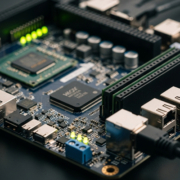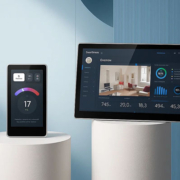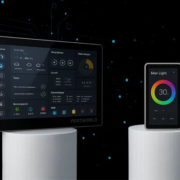System on Module (SoM) Explained: What It Is and How to Choose the Right One
As embedded systems become more compact, powerful, and complex, developers are turning to System on Module (SoM) solutions to accelerate product development while maintaining flexibility and performance. But what exactly is a SoM, and how do you choose the right one for your project?
This guide explains the fundamentals of SoMs, their benefits, common applications, and the key factors to consider when selecting the ideal SoM for your embedded system.
What is a System on Module (SoM)?
A System on Module (SoM) is a compact, self-contained computing module that integrates the core components of a computer system, such as:
- CPU (Processor)
- RAM and Flash storage
- Power management circuitry
- Communication interfaces (Ethernet, USB, UART, I2C, etc.)
It is designed to be plugged into a carrier board (also called a baseboard or motherboard), which provides the specific I/O connectors, ports, and application-specific interfaces.
In short: SoM = the brains of the system, while the carrier board = the body that connects it to the outside world.
Advantages of Using SoMs
-
Accelerated Development
Avoid complex hardware design from scratch. SoMs are pre-validated and pre-tested. -
Modularity & Scalability
Upgrade to a more powerful CPU or different interface by replacing the SoM, not the whole system. -
Compact Size
Ideal for space-constrained embedded applications like tablets, automation terminals, or edge devices. -
Reduced Time to Market
Developers can focus on application logic and UI while relying on a proven compute platform. -
Long-Term Availability
Industrial SoMs typically come with long lifecycle support, reducing redesign needs.
Common Applications of SoMs
- Smart Home Panels & IoT Gateways
- Industrial HMI & Automation Controllers
- Digital Signage & Kiosks
- Medical Devices
- Smart Cameras & Edge AI Systems
- Robotics & Drones
- Vehicle Infotainment & Telematics
How to Choose the Right SoM
When selecting a SoM, it’s crucial to align the module’s capabilities with your project’s technical and commercial needs. Here are the key aspects to consider:
1. Processor Architecture & Performance
- Cortex-A55 (e.g., Rockchip RK3566/RK3568) for low power, balanced performance
- Cortex-A76/A55 hybrid (e.g., RK3588) for high-end multimedia and AI applications
- x86 (e.g., Intel/AMD) for Windows compatibility
Choose based on OS support, compute requirements, and energy constraints.
2. Memory & Storage
Consider RAM (DDR3/DDR4/LPDDR4) and Flash (eMMC/NAND) capacity. Minimums vary by OS (e.g., Android 11 prefers 2GB+ RAM).
3. I/O Interfaces
Ensure the SoM supports required peripherals:
- Display: HDMI, MIPI, LVDS
- Touch: I2C/USB
- Connectivity: Ethernet, Wi-Fi, 4G, RS485, GPIO
4. Operating System Support
Check if the SoM supports your target OS: Android, Linux (Ubuntu, Debian, Buildroot), or Windows. Some modules come with ready-to-use SDKs or BSPs for faster development.
5. Thermal Design & Power Consumption
Passive cooling vs. active fan, heat sink requirements, and power supply specifications.
6. Longevity & Supplier Support
Choose vendors offering 5-10 year lifecycle support, full documentation, and engineering assistance.
Why Choose Portworld SoM Solutions
Portworld offers a comprehensive line of ARM-based SoM modules powered by Rockchip RK3566, RK3568, and RK3588, ideal for smart home, industrial control, and edge computing projects. Our SoMs offer:
- Android/Linux OS support with complete SDKs
- Ready-to-integrate carrier board solutions or OEM/ODM custom baseboards
- Rich I/O (HDMI, MIPI, RS485, USB, CAN, GPIO)
- Long-term supply and engineering support
- Global-ready compliance and flexible CKD/SKD/PCBA models
Whether you’re developing a smart control panel, digital signage system, or intelligent gateway, Portworld’s SoM platforms help you get to market faster with lower R&D risk.






